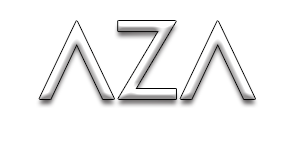Financial Statements
Financial statements provide a snapshot of your company. A financial statement can help you determine the state of your company and help you make financial decisions. The main financial statements that will matter to you as an entrepreneur will be an income statement, balance sheet, and a cash flow statement.
Income Statement
The income statement gives you a breakdown of the operations of your company. From the income statement, you can see your revenues, expenses, and profits.
Click to enlarge

Break-down of A Typical Income Statement
- Sales – This is the revenue/income for the company. If you sell 10 products at $5 then your revenue will be $50.
- Cost of goods sold – This is how much it costs to make the products you have sold. If you sold 10 products and it costs $2 to make each one that your cost of goods sold is $20.
- Gross Profit – This is your Sales – Cost of Goods Sold. Gross profit is the first snapshot of how much money you’re making from your business. From the gross profit, you can make decisions on how many workers you can hire, budget office supplies, and anything else you think your business will need.
- Operating Expenses – This is anything you spend money on to keep your business operating that is not associated with the production of your product. This includes business insurance, employees, advertising, rent, etc.
- Operating Income – After you’ve calculated your revenues minus your expenses, this is the actual income of your company.
- Non-Operating revenue/expenses – This is revenue and expenses that have nothing to do with the company’s main activity. If you sold a building, land, or equipment owned by your company then the profit from that sale would be non-operating revenue. If you were sued or had to pay interest on a loan then the money you paid would be a non-operating expense.
- Net income – This is the final dollar amount of how much your company made. Typically this is what you claim on your taxes as personal income if you are a traditional entrepreneur or independent artist.
Balance Sheet
The balance sheet gives you an understanding of your company’s assets, liabilities, and equity.
- Assets are anything that your company owns/makes use of/benefits from that can generate revenue now or in the future. Current assets are things that can generate immediate cash. This includes cash, accounts receivable (money that people owe you), things that you’ve prepaid (insurance, rent), and inventory (products that you have on hand to be sold). Long-term assets are things that can generate money in the future. This includes land, buildings, property of any kind, investments, etc.
- Liabilities is anything that you owe. Current liabilities include money that is due in the near future. This includes accounts payable (standard bills, vendors), accrued expenses (things that you owe but haven’t paid yet), unearned revenue (you’ve been paid but you haven’t completed the job). Long-term liabilities are things that you owe in the long term or in more than a year (typically this includes loans).
- Equity refers to the money that is owed to its owners. If you own 30% of your company than you are entitled to 30% of its profits. This also includes any stocks in your company that others have bought and any other partners, investors, etc.
A balance sheet must always be in balance (Assets = Liabilities + Equity). If you look at the bottom of the balance sheet example above, you’ll see that the final total is the same on both sides of the balance sheet.
*Tip #1: As you run your business, try to keep the ratio of current assets and current liabilities at 1:1 as a minimum. 2:1 is even better. This calculation is known as the current ratio. If anything happens this means that you will always at least be able to pay your bills.
*Tip#2: Take on long-term liabilities (loans) with caution. Taking on too much debt at the beginning of your business can be dangerous. Only take out loans if you are absolutely confident in your plan and ability to pay it back. There is nothing wrong with taking out a loan to expand your business just make sure that you are managing your funds and making timely payments.
Cash Flow Statement
Cash Flow statements help to show you how money is flowing through your company. Just because you sell a product doesn’t mean the money is available to you immediately. This is where accounts receivable comes from. If someone makes a large order of your product and doesn’t pay you all at once, then the money they owe you is now a part of your accounts receivable.
From the perspective of the customer, buying your product on credit is great but as a business owner, this can be difficult. You need cash to run your business. Cash is any money that you can quickly access to pay bills, employees, and any other necessary expense. If you are not getting all of your money immediately from the customer then how can you run your business? This is especially true for artists who are waiting on royalty payments that could take months to receive.
Fortunately, most people generally pay up front in cash or with a credit or debit card. This is what’s going to help you cover immediate expenses. A Cash Flow statement will help give you a snapshot of how your company is managing the cash that’s coming in.
A Cash Flow statement is always broken into three categories: operations, investing activities, and financing activities.
- Operations is all the cash coming in from daily business activities (cash inflow – black) as well as the cash going out (cash outflow – red) over a particular period of time. This is different from revenues on an income statement because a cash flow statement only refers to cash. For example, a customer buys $10,000 worth of merchandise from your company and agrees to pay you $2,000 every month for the next five months. The $2,000 that they give you for the first month will appear on your cash flow statement and the $8,000 that they owe will appear on your balance sheet as accounts receivable. As they pay you each month, your accounts receivable will decrease and your cash flow will increase.
- Investing Activities includes equipment, assets, or general investments related to cash. For example, if you own a printing company and you buy new printers. The money that leaves your bank account for that purchase will be recorded in red (cash outflow) on a cash flow statement. If you buy the printers on credit and make a partial payment then you only record the amount of the partial payment. If you needed cash and sell one of the printers then the cash you receive from the sale will appear on your cash flow statement as cash inflow (black)
- Financing Activities includes debt, loans, and dividends. Dividends are money that is paid to shareholders and owners of the company. Investors will give you money in exchange for ownership or stocks/shares in your company. The money they give you is cash inflow. They’re giving you money because they want to receive a percentage of your profits (dividends). When you pay them, the dividend is recorded as cash outflow.
For most entrepreneurs, these statements may or may not be necessary to you in the beginning. However, as your company grows and becomes more complex (especially if you want to take on investors and shareholders) these statements will be crucial to your success. Financial statements show potential investors how well or how poorly your company is doing.
Why does this matter? If an investor is looking over your statements and sees that your company is growing and able to properly manage its money then they will be more likely to invest. Healthy companies always pay the best dividends!








